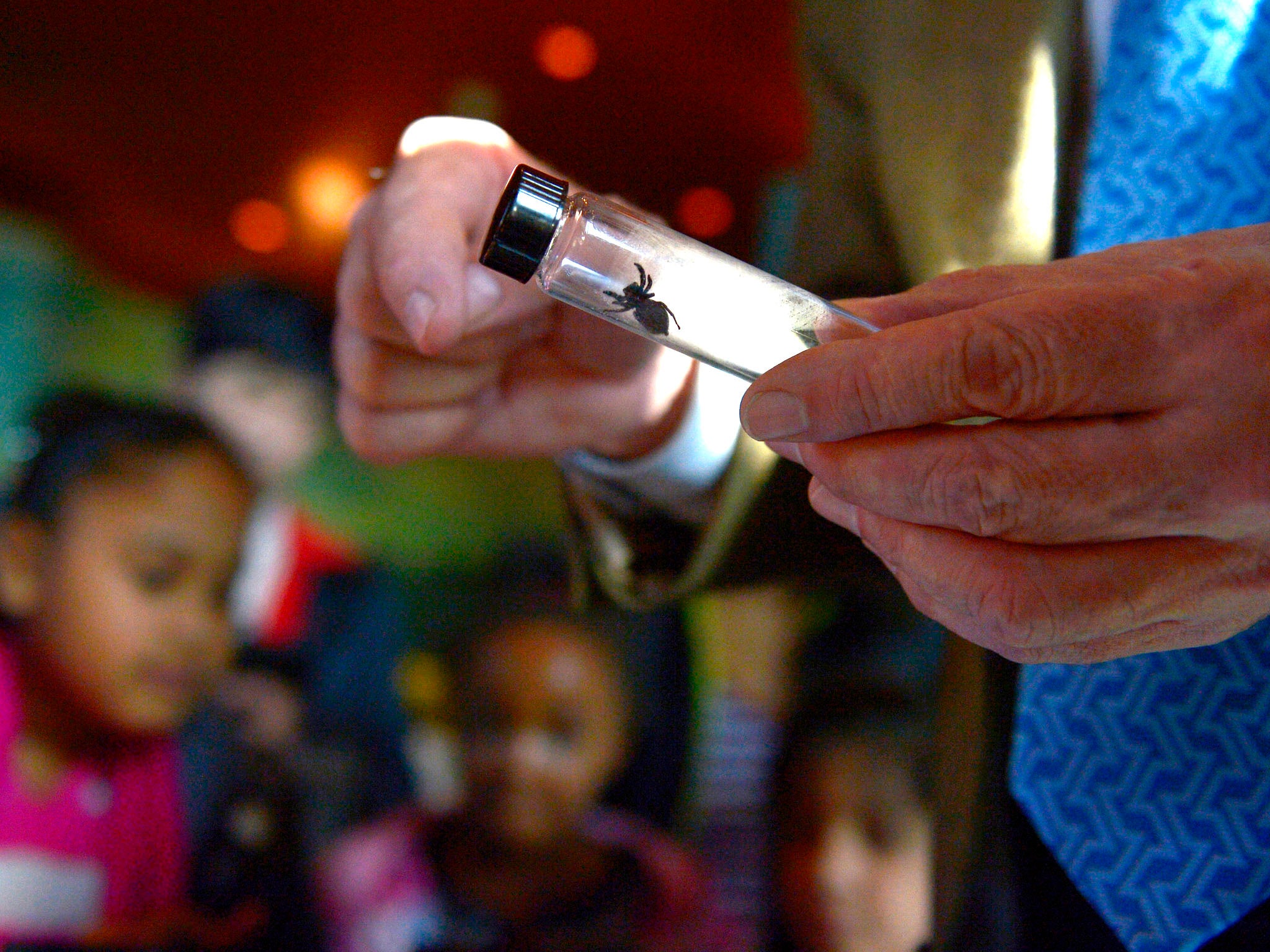Spider adapted to life on space station

Support truly
independent journalism
Our mission is to deliver unbiased, fact-based reporting that holds power to account and exposes the truth.
Whether $5 or $50, every contribution counts.
Support us to deliver journalism without an agenda.

Louise Thomas
Editor
After a space voyage of almost 42 million miles, Nefertiti the "Jumping Johnson" spider landed at the Smithsonian's Insect Zoo at the National Museum of Natural History last week.
Unfortunately, whether it was her long flight or the short natural life span of a spider, "Neffi" was found lifeless Monday morning, after only four days on public view.
"Yes, it's unfortunate. She seemed well-adjusted to earth and was in good spirits. But 10 months is a good run for a little jumping spider," said museum spokesman Randall Kremer,
The thumbnail-size brown spidernaut was sent to the international space station as a student project in June and later splashed down in the Pacific aboard a SpaceX Dragon capsule.
During her 100-day mission, the spider adapted to weightlessness and learned to snag fruit flies with an unorthodox method. Instead of leaping onto her quarry, as jumping spiders do on Earth, Neffi "sidled up to the fruit flies," said Dan Babbit, manager of the O. Orkin Insect Zoo.
Amr Mohamed, an 18-year-old from Alexandria, Egypt, proposed sending two jumping spiders to space for a YouTube-sponsored contest. His experiment was one of two chosen by a panel of all-star scientists, including astrophysicist Stephen Hawking.
In Mohamed's video proposal, he said he thought that jumping spiders would founder in space. "I suggest it will jump toward prey but not get it," he said. On Earth, jumping spiders capture prey with a gravity-limited leap. In the microgravity of orbit, such a trajectory would send the spiders soaring past their dinner.
Once aboard the station in a shoebox-size habitat, Nefertiti awaited a meal. NASA astronaut and station commander Sunita Williams released fruit flies into the spider chamber.
"My gosh, I saw her stalking a fruit fly," Williams said during a September broadcast from 200 miles above the Earth. "She was going real close. All of a sudden, she jumped right on her. It was amazing. I think the spider has absolutely adapted to space."
Back in the grip of Earth's gravity, though, Neffi initially had trouble catching food. "She overshot when trying to leap," said Babbit. Humans, too, need to readapt to life on Earth after months in space. Bones weaken, eyes lose focus, muscles shrink.
After splashing down and being transferred to a laboratory in Colorado, Nefertiti needed one last ride. The company that built her habitat, BioServe Space Technologies, chose the Smithsonian's Insect Zoo as her retirement home.
It just so happened that the museum's new director, Kirk Johnson, was passing through Colorado. Johnson stowed Neffi inside a small plastic box, stashed her in his pocket and flew to Washington, delivering Neffi on Nov. 21.
Johnson called the responsibility stressful: "This spider has traveled 41.5 million miles. Splashed down in the Pacific Ocean. Flew to Japan, flew from California. This [was] a special spider."
Neffi's spacefaring companion, Cleopatra, did not even survive the journey. Poisoning is not suspected.
Subscribe to Independent Premium to bookmark this article
Want to bookmark your favourite articles and stories to read or reference later? Start your Independent Premium subscription today.
Join our commenting forum
Join thought-provoking conversations, follow other Independent readers and see their replies
Comments